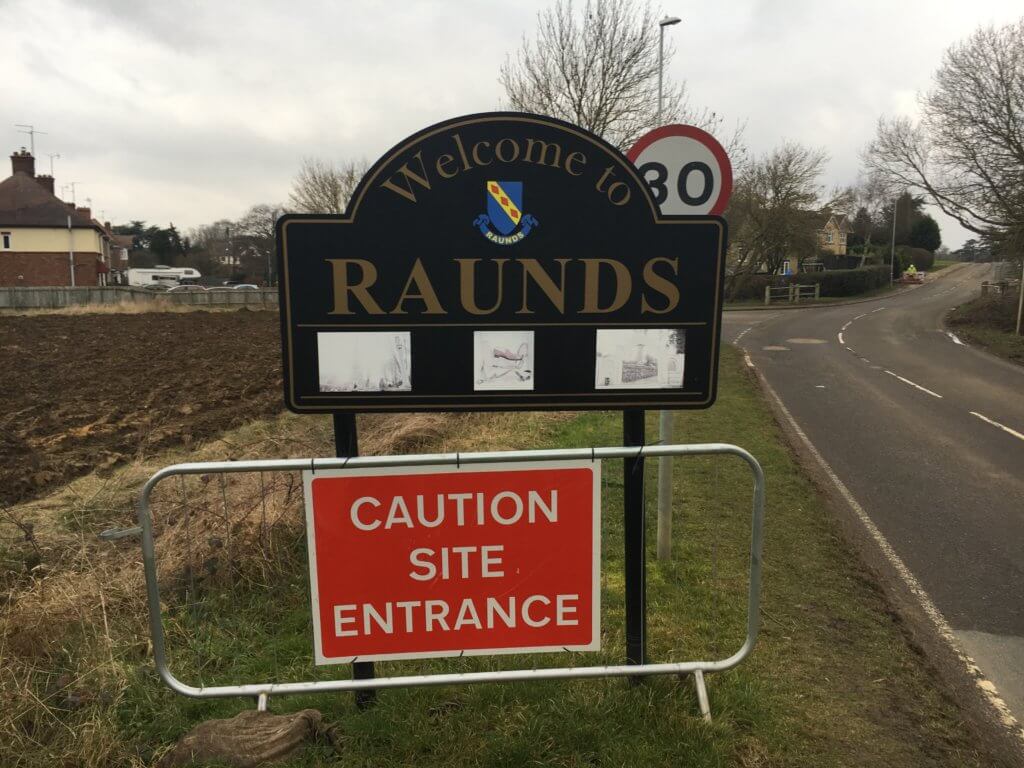
The Planning White Paper came out last week. I understand that planning is very important, and even that it can be quite interesting, but I’ve managed to swerve knowing much about it for decades and that is still my aim. So, I’ll leave comments to others better informed.
But I keep hearing that we need more housing and I’m an expert on that for I own a house.
In the east Northants town where I live – it’s called Raunds (which may be derived from a word for ‘edge’ or ‘boundary’ perhaps because we live on the edge of Northamptonshire, perilously close to Cambridgeshire and Bedfordshire (which meet a better county at the Three Counties Water Tower) – there are lots of new houses going up. Between the 2001 and 2011 censuses the population of this small market town increased from 8275 to 8641 souls. I predict the 2012 census will show a much bigger increase.
I’ve lived here for 30 years. On arrival there were still a few small boot and shoe factories working here. In the nearby village of Stanwick it is said that the Duke of Wellington’s boots were made – at least in the excellent pub restaurant of the same name it has been said. HE Bates wrote about this area in his novels and short stories – he was born in Rushden (not very posh).
But the shoemaking has gone to the Far East now and their former sites, brownfield sites, are now filled with new housing. But we’ve run out of old factories and so Raunds is spilling out into the countryside like a paunch hangs over a belt.
There seem to be a remarkable number of new house going up – and almost all of their inhabitants will need cars to get to work because the bus services aren’t great and the nearby opportunities aren’t that numerous – unless they are all going to be stay-at-home writers, writing about natural history (Crikey! I hope not!).
there are quite a few houses and businesses prone to flooding – I wonder what inmpact all this new hard surface will have on flood risk. But don’t get me wrong – I’m not complaining about any of this built development. It seems to me that it has been done fairly sensibly – using old industrial sites and then spilling out onto nearby fields. I slightly wonder whether the local schools and doctors will cope, but maybe local shops and the library will have a more certain future.
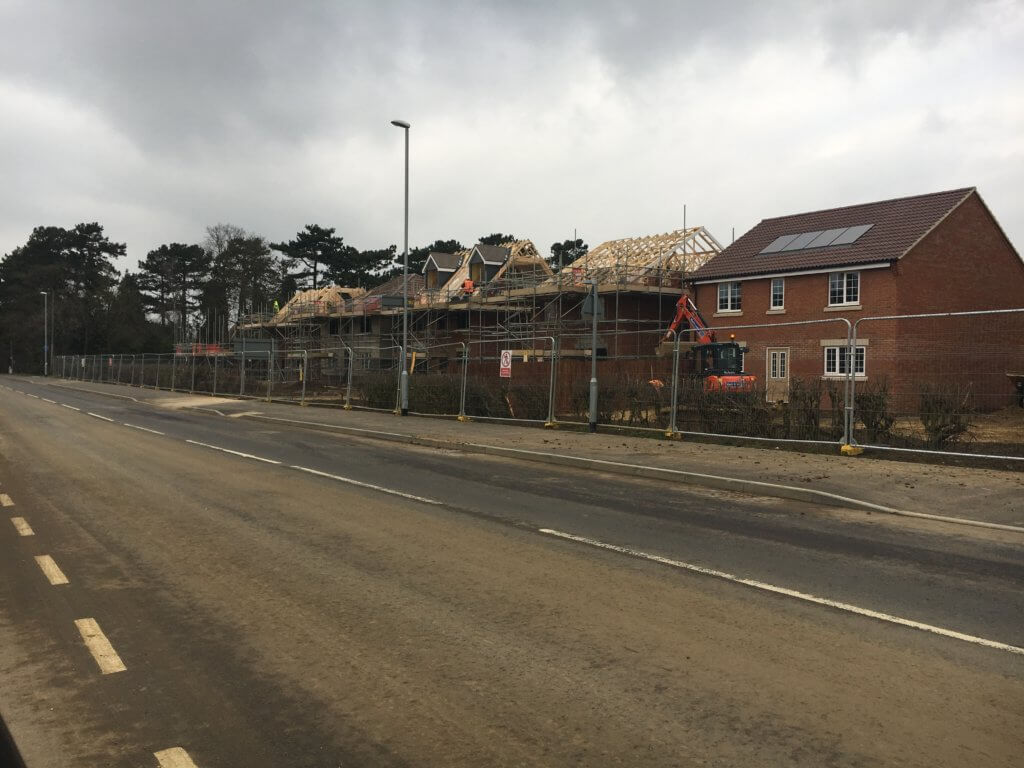
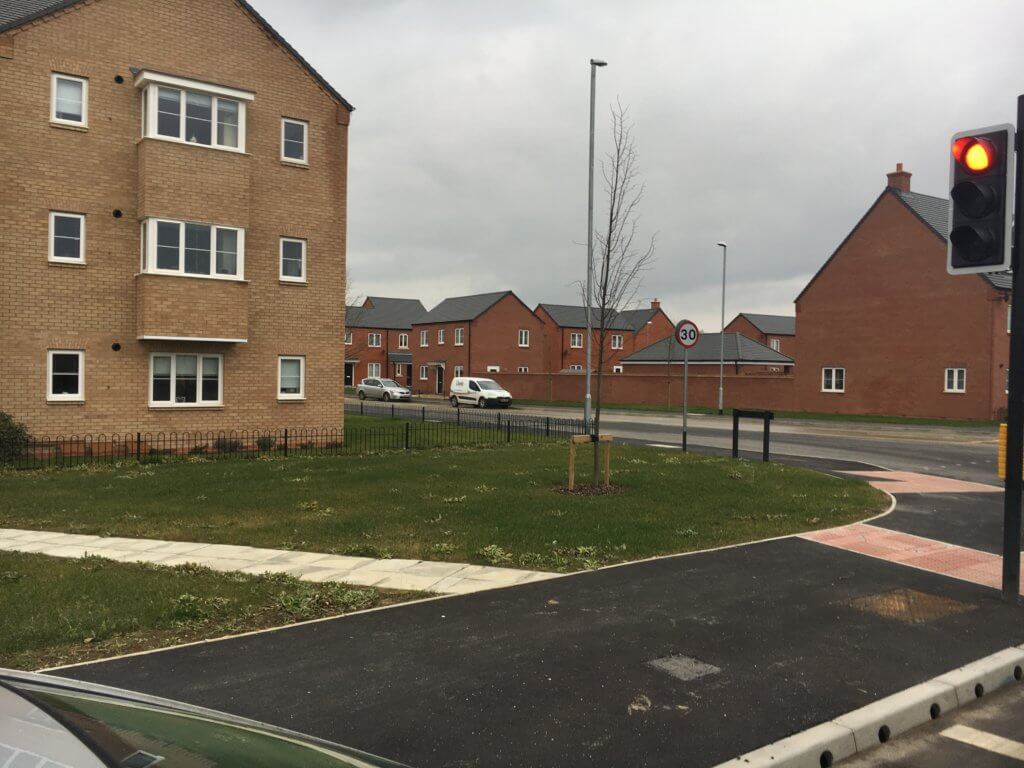
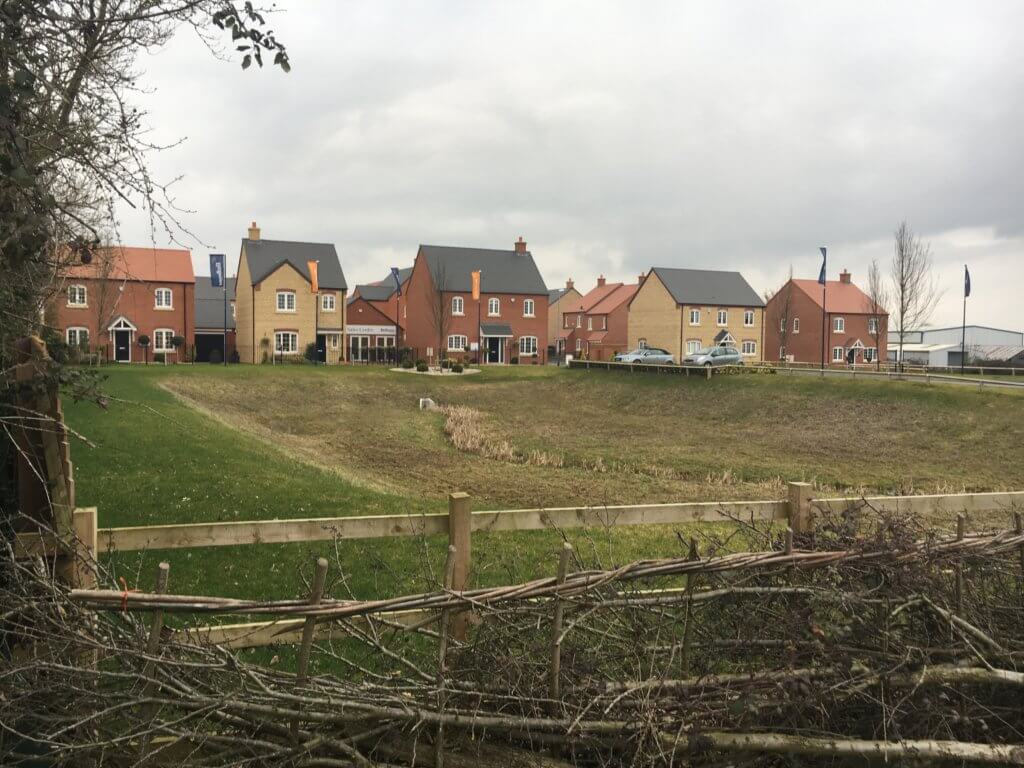
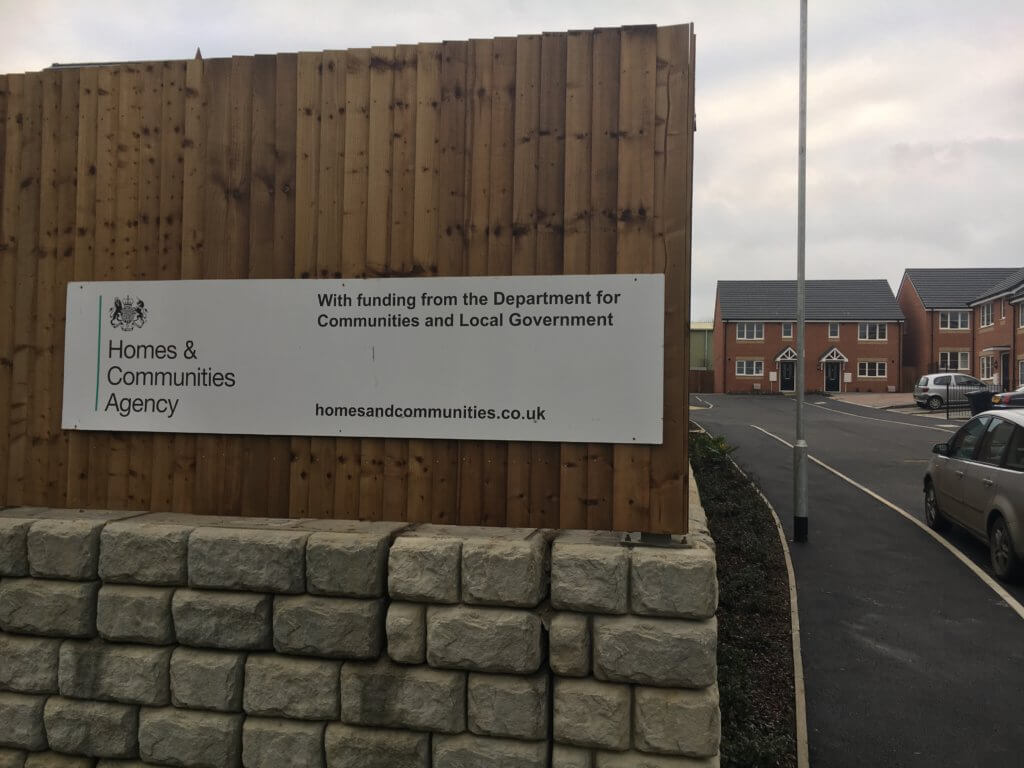
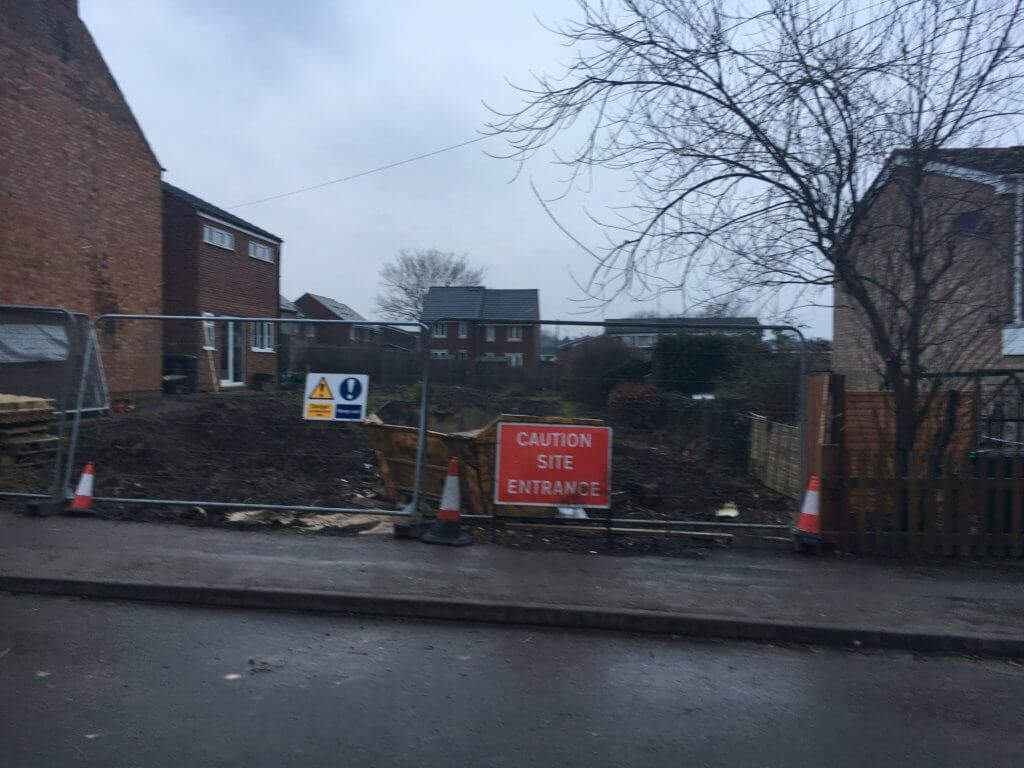

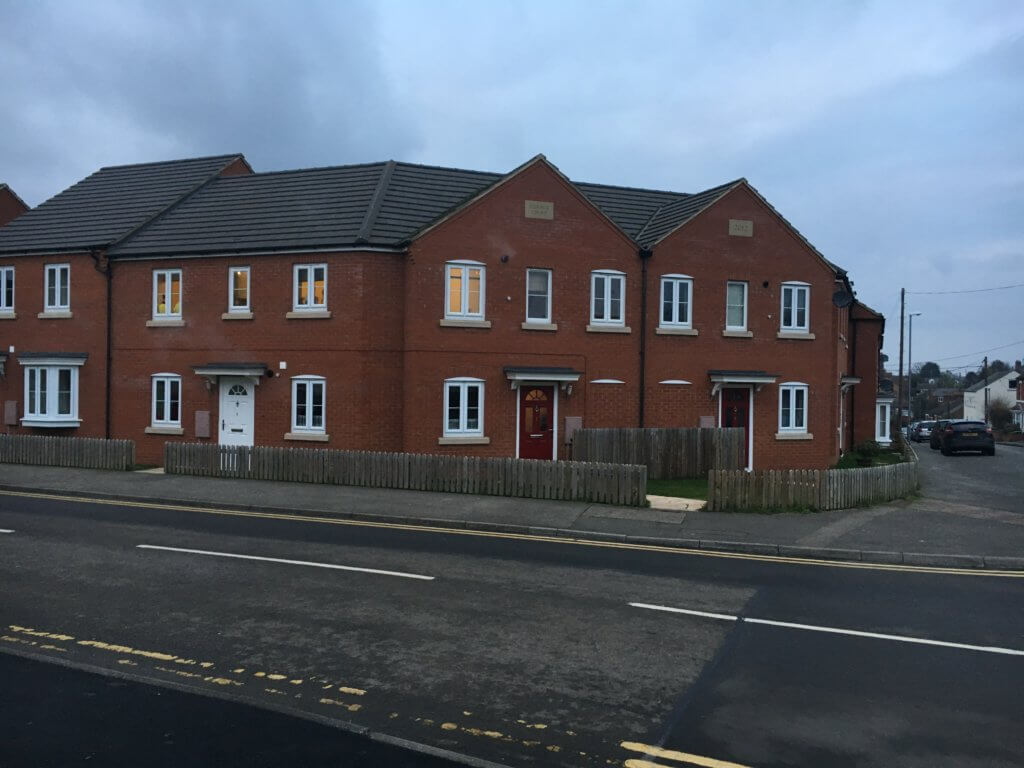
[registration_form]
All the work has gone to the far east, so build housing where there are no jobs for the people in that housing to take. Well that is going to work out well. Housing needs to be built near to where the jobs are, and on a brownfield site is exactly where the jobs are not. That is why it is brownfield.
I’m basically just agreeing with you that this is built on the wrong place and doomed to fail due to political ideology not allowing for it to succeed. We need to build more where the jobs are instead. Of course that means some pretty radical restructuring and a lot of freefalling house prices in some very conservative seats which are filled with property price millionaires, so that will never happen.
I hope someone rips that propaganda sign off too. Disgusting that the govt feel no shame in putting that up but moved heaven and earth to remove similar signs when there was EU funding in place. Bloody political hypocrites.
If we followed the recommendation of the Natural capital Committee to create 250,000 hectares of new ‘community woodland’ around our towns and cities we could build 3 million new houses AND improve the environment. I put ‘community woodland’ in inverted commas because although I’m a tree person, I don’t read this as solid woodland, but rather habitat less intensively managed than arable land (of which you have a fair bit around Raunds !). It would first be for people – and attack both mental and physical health problems, allowing our children back into the countryside and nature. It would be great for wildlife because a lot of it would be planned with wildlife as the lead objective – and the scale and careful planning would deal with people/wildlife conflicts. Hidden from most people’s view would be water management – checking the flood upstream, cleaning grey water in big reedbeds downstream, and there’d be opportunities for renewal energy – from wood, and perhaps even carefully sited wind turbines. And, as I’ve blogged about before, it would not leave us all starving because this area of even the best arable is no more than noise in the system of food production.
The final crucial, link is transport – because if you get it right you can live almost anywhere. An if most people I suspect would agree we are failing on heroically at present.
It would be good to have some of that community woodland IN our towns and cities as well as ‘around’.
There are identical housing estates to those shown all over the country. Soulless, virtually treeless, boring open areas of mown grass, absolutely no imagination or consideration applied to the overall design, just a notch-potch of styles thrown together, and not cheap either! We can and should do better. There are pockets of good, affordable developments but they are not the norm.
Well we definitely need more houses which will need more roads but how I wish those scientists who think repeat think that the pressure from a Ewes feet equals run off need to address the issue that is far more likely.
That is the run-off from roofs,concrete drives,compacted gardens and roads is for absolutely certain a larger contributer to flooding.
Of course scientists always consider they are right to equal pressure of Ewes feet to mean compaction but my best guess is if any scientist said that his flock was causing compaction to a sheep farmer then the very ordinary educated shepherd would be highly amused.
Dennis – your comments are priceless – thank you. You don’t have a reference to that scientist saying that do you/ No, silly of me to ask.
This kind of shite housing started in 82. It’s made of cardboard, costs a fortune and is a con. The mortgage ( Death Loan ) on the property only relates to the land that the shite is built on, and not the property itself. If you’ve any sense at all Mark, clear all your debts as soon as possible. If you have any. The bubble is about to burst. In my mind the only thing that is keeping this ship afloat is off shore, illegally sourced, tax free cash.
Well I’ve delivered onto that site and many more in this region (Bucks, Northants, Oxford, Bedfordshire, Leicestershire. Surprisingly most sites 90% have been sold before a brick is laid. Those buying aren’t typically first time buyers most are landlords, again. Out of 300 sites I visit only two(!!) have built flats one/two bedroom. None have built ‘starter homes’ (Two bedroom houses). So first time buyers don’t get a look in.
I’m actually alarmed at some sites size and in some cases the fields they’re actually built on, have a look at the size of the development just outside Sywell/Overstone on the A43, that was farmed and surely counts as greenbelt.
Eventually Raunds will be a surban housing estate of Wellingborough lol
Sorry I forgot to add, you mention run off. Most developers have taken this into account to some degree and have incorporated into a landscaping look in the third image. To be honest that looks a bit lame, I visit one where they’ve created ditches with Reed beds and small lakes and dipping ponds. The really big ones (Wotton, Bedfordshire) have schools and doctors also incorporated.
I grew up after the war in a suburb. That was because the company dad worked for ICI Imperial Chemical Industries to you my boy, now allowed workers to live 5 miles from the works rather than 3, walking distance! So there is one solution to the transport and health problems.
Mark I always thought you as a bird watchers would be observant. You ask about flood risk, your picture “More new build on the north of town” shows what looks like a depression (with even what looks like reeds in the ditch at the bottom). That looks like some temporary flood pond site to hold runoff. Even if you cannot see it it is probably there. I was puzzled by developers digging what looked like an Olympic swimming pool at the entrance to one building site near here. (It looked like a health and safety hazard to have such a deep pond) They then filled it with those things that look like plastic milk creates (if you are old enough to remember those) and covered it over. Passing by the grassed entrance now I have difficulty in believing I saw the work.
I’ve had spent quite a long time around the fringes of the planning system and there are two points I’d like us all to think and talk about more.
One is that, given that we really do need a lot more houses, I have become more and more convinced that in the broad “environmental” movement, in which I’ve played my part, we have got our message very wrong for much too long; we have consistently sought to minimise greenfield land take as a top priority.
We’ve pushed for, and largely got, new estates packed with nasty little boxes with tiny gardens or flats with no gardens at all. Will generations to come thank us for this legacy? Do these estates have any sense of place or local distinctiveness at all? I don’t think so.
In the city centre or some brownfield maybe high density makes sense but not in villages and towns. A lower density, with bigger gardens, more greenspace, would be so much better for community, for wellbeing, and for nature. Nice gardens have more wildlife than arable prairie or intensively managed grassland even before you factor in proper communal greenspaces that are more than mown verges and low maintenance evergreen shrubs. Minimising land take minimises all the other outcomes we say we want, not least the ambition that there should be more nature that people care about more. Like many many other people, I was not careful enough about what I wished for.
#2 is about how the planning system works, or rather about how it doesn’t. The big money is made, more or less risk free, by the original landowner (farmer or speculator) whose land jumps from maybe £10,000 /acre as agricultural land to maybe £1m/acre or more for building land. The actual business of building the houses has more risk and much less profit and is certainly much harder work.
If planning conditions for s.106 contributions to new schools, roads, doctor’s surgeries, etc and requirements to deliver targets for greenspace, social housing, SUDS, good insulation, etc, were rigorously enforced, then the costs of these things, which are significant, would fall onto the original landowner because they would be reflected in the cost of buying building land in the first place. The original landowner might only make a 5000% profit instead of a 10,000% profit – but 5000% profit for doing nothing is still a pretty good return.
However, what we have now is a system in which developers can routinely appeal against such added costs “getting in the way of delivering the target housing numbers”. Building land is priced on the working assumption that the developer can get away without meeting all those pesky conditions. Hence it’s a self-fulfilling prophesy; the developer often genuinely cannot afford to deliver those public goods because when he bought the land the market price assumed that he wouldn’t have to.
And all this makes overly burdensome planning conditions seem like the problem, holding back developments, when in fact it’s the *lack* of enforcement that’s to blame for the lack of social housing etc.
Ps – sorry Mark but as a home owner I think you’re the exact opposite of an expert on the need for more housing! It’s the people who *don’t* own a house who know more about how that feels, and how that impacts your personal, professional, and financial life in ways large and small (declaration of interest – I am one of the non house owners!). And if all new houses are to be built only near to employment, are only rich homeowners allowed to live in the country now?
It’s all very difficult to resolve, but if we all focussed more on what we do want and less on what we don’t we might get better outcomes.
jbc – great comment.
And my remark about being an expert was purely, or impurely, ironic.
I know! 😉 But more seriously, tackling the housing crisis does mean that those who already own a house will no longer have such a risk free capital investment. Objectively and ideally we actually need house prices to fall, and that’s a genuine personal issue for existing owners with mortgages and a huge political problem. It’s not going to be an easy merry go round to get off.
I strongly believe that everyone faces the problem of the housing crisis. The people who own houses too confront this issue, At the same time, I must agree that the risk percentage is less to the persons, who has their own house.